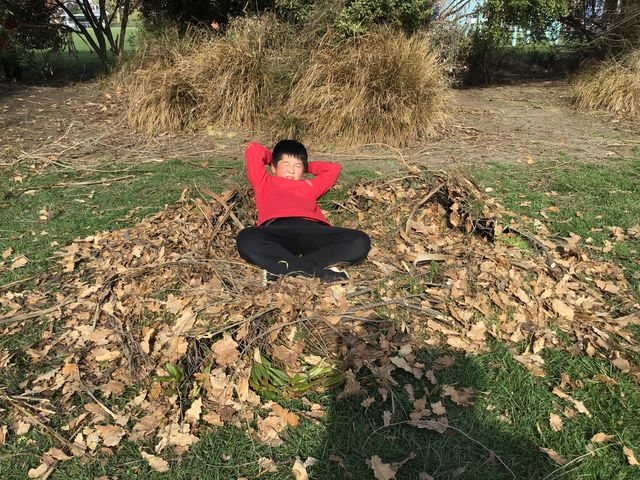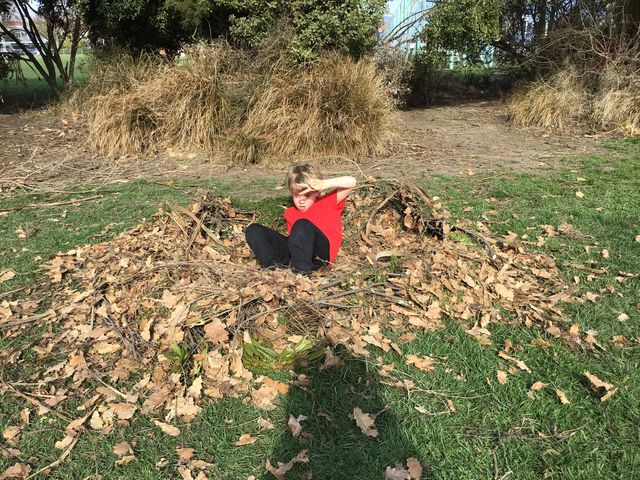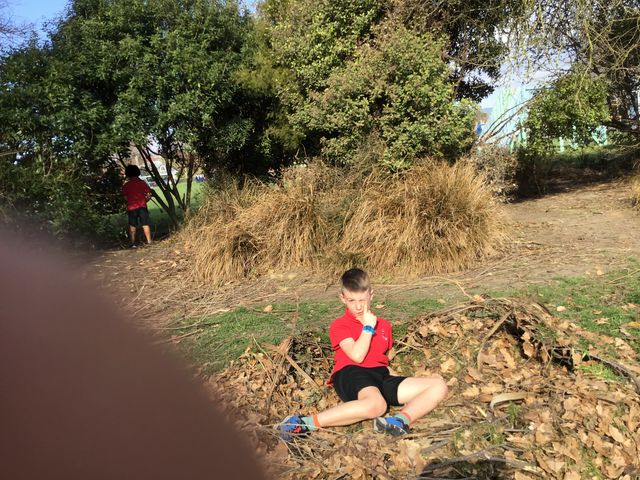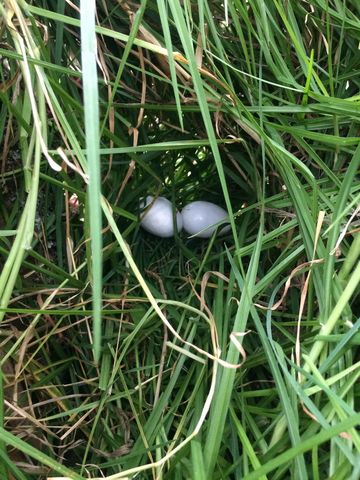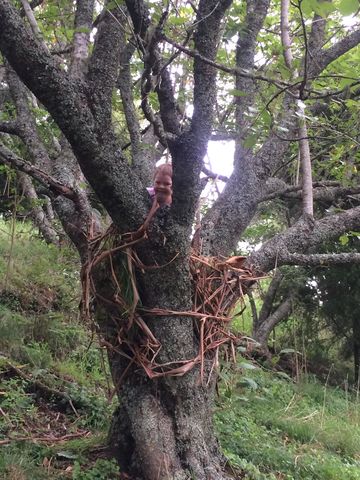Toroa (aka royal albatross) are one of nature's most incredible and awesome fliers, and they can glide 190,000 kilometers a year at sea (that's a lot of trips to the dairy and back!). They have one of the widest wingspans of any bird (3m!) and they also have one of longest incubation periods (11 weeks!) sitting on their eggs = that nest better be comfortable. Find out all about the toroa nest, with Department of Conservation's Nic Toki.
Be inspired by Aotearoa’s best nest-makers and build the most humungosauraus, or the most infinitesimal, or the craziest, craftiest nest around.
What to do
Your mission is:
Instructions
1. MASTER BUILDER
Before you begin check out this video of Sir David Attenborough hanging out with the world champion of nest builders: the sociable weaver from Africa. This nest has it all: engineering, design and it's a major party zone to boot!

2. NZ'S BEST NEST
Then check out the 'what's happening' and 'inspiration' tabs and get inspired by NZ nature's best nesters! How will yours hold up?
Swallows use saliva to help stick it together. Will yours be cosy like a kōkako's (pictured), tangled like a tūi's or just a pile of poo like a tākapu's (gannet's)!?

3. GATHER THE GOODS
Get your bird-brain ticking over and hunt around your home, yard or local park for nesting materials – then start building! You could think small like a riroriro (grey warbler): cotton balls, wool or shredded paper, of think big like a giant moa: fallen branches or mowed grass can do the trick.
This strange creature (pictured) has laid a rugby ball! Perhaps's she's a new species unknown to science?

4. GUESTS IN YOUR NEST
Take some family photos of your finished nest showing how you’ve put it together and who fits inside!!
If your nest is moa or sociable weaver-sized, then get in the photo with you or your nestling friends to demonstrate the scale!

5. TERRIFIC AND TINY
Your nest doesn't have to have enough room for a morepork to swing a mouse, it could be tiny and intricate and magnificently mini. The world's tiniest bird is the bee hummingbird.
The most miniature bird in NZ is the rifleman (titi-pounamu) which look like tiny green flying eggs. Apparently they only need a couple of inches of floor space to lay their eggs. Would they have wing room in these nests?

6. NEST TEST
If you've constructed a nest off the ground, have a go at adding some weight into it – you may like to use small rocks or chicken eggs or build a bird that could mimic a real bird sitting on the nest feeding its chicks. How your nest is constructed is important to how many eggs and chicks it can hold and how big your adult bird is – because those hungry chicks will grow fast!

7. UPLOAD FOR WILD EYES!
UPLOAD a photo of your brilliant bird engineering and earn points to get you to the next level and make the eyes on your wild eyes avatar go wilder and wilder!
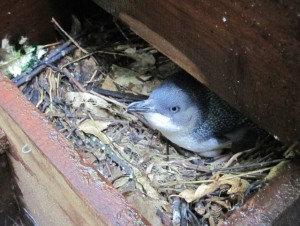
WILD FACTOR
Put in the hard yards and earn Wild Eyes bonus points by making an actual nest for our natives: build a backyard nest box, or if you live near the coast where there are penguins, you could make a box for them and help keep kororā ka pai on the coast – here's the how to!

WILD WEATHER TIP
If the weather is stink, head inside and make a nest from cushions, blankets and other stuff lying around your house.
What's happening?
WHY THE NEST QUEST?
Birds nest for the same reason we live in houses: to provide a safe and sheltered place to raise a family! And just like humans live in all sorts of different houses, birds use all sorts of nest designs. Some even have a roof, like the riroriro / grey warbler’s crib (pictured)!
Not all riroriro nests have a roof – perhaps this one is the convertible version?

– A shining cuckoo chick answering the doorbell. Photo Dave Crouchley (c)Crown
Eggs-stream comfort

– A good nest stops scrambled eggs!
Nesting material is really important for a whole bunch of reasons: It insulates the eggs, protecting them from sudden temperature changes and the elements. It cushions the eggs which stops them breaking under their parents’ weight. It camouflages and hides the eggs from predators, and on top of all that, it keeps the eggs nice and close together for heat efficiency.
So you wanna make sure you’ve got good stuff to do the job!
SITTING DOWN ON THE JOB
POO CONCRETE
There is such a variety of ways nests are held together, and none use nails! Tākapu (gannets) use … guano (poo!) to cement the dried seaweed that the nest is made from. Feel free to add that to your nest if you wanna be like a takapoo!!

CONSTRUCTION MATERIALS
Birds use twigs, leaves, grass, yarn, hair, feathers, moss, pine needles, mud, pebbles, straw, shredded paper, cotton balls and spider webs! They also use human-made things things like paper, string, plastics: anything that they can pick up and carry.
In Mexico these birds pick up discarded cigarettes for their nests. Sounds pretty gross but scientists reckon the chemicals in the ciggies keep out mites!
Inspiration
BRING THE BLING
The Australian bower bird is the prize-winning interior designer of the bird world. If you like decorating or arts and craft you'll definitely want to watch this and join legendary presenter David Attenborough in bowing to the bower!
TREE TOPS ARE TOPS

– The house comes with a bird's eye view. Don Merton (c)Crown
One of the reasons that some native birds like tūi and riririro have survived ok is their nests are often high up in trees (away from cats and rats) and hard to get to.
For others like kākā, tīeke or kārearea, nest sites like rotting trunks or rocky ledges that were awesomely camouflaged from airborne threats, were now awesomely accessible to the new predators like stoats and rats.
Failing the nest test
A lot of native birds had gotten into some easy-to-reach nesting habits that didn’t work out very well for them when nasty new arrivals turned up. And their traditional building sites, like old rotting logs and crevices in trees, were now gone too, as forests were destroyed to make way for farms and houses.
Even smart birds like kea sometimes nest in not-so-smart places in terms of avoiding ground hunters.
 – Rock star accommodation (c) Corey Mosen
– Rock star accommodation (c) Corey MosenBEST NESTS
OK so I've got a high IQ, but I need to work on nest defence. I best check this BBC Earth selection of the 16 most amazing nests. My mate the pukeko even makes the list ... not that I'm jealous or anything ...!
- Kevin the kea
GATE-CRASHING CUCKOOS
Some birds don’t even bother making their own nest, preferring to just jump into someone else’s! The pipiwharauroa (shining cuckoo) turns up in New Zealand each year from the Pacific Islands and lays its egg in the nest of the wee riroriro (grey warbler) – who suddenly becomes the new parent!
Imagine someone three times bigger than you suddenly arrive at your house and demand to be fed dinner!










